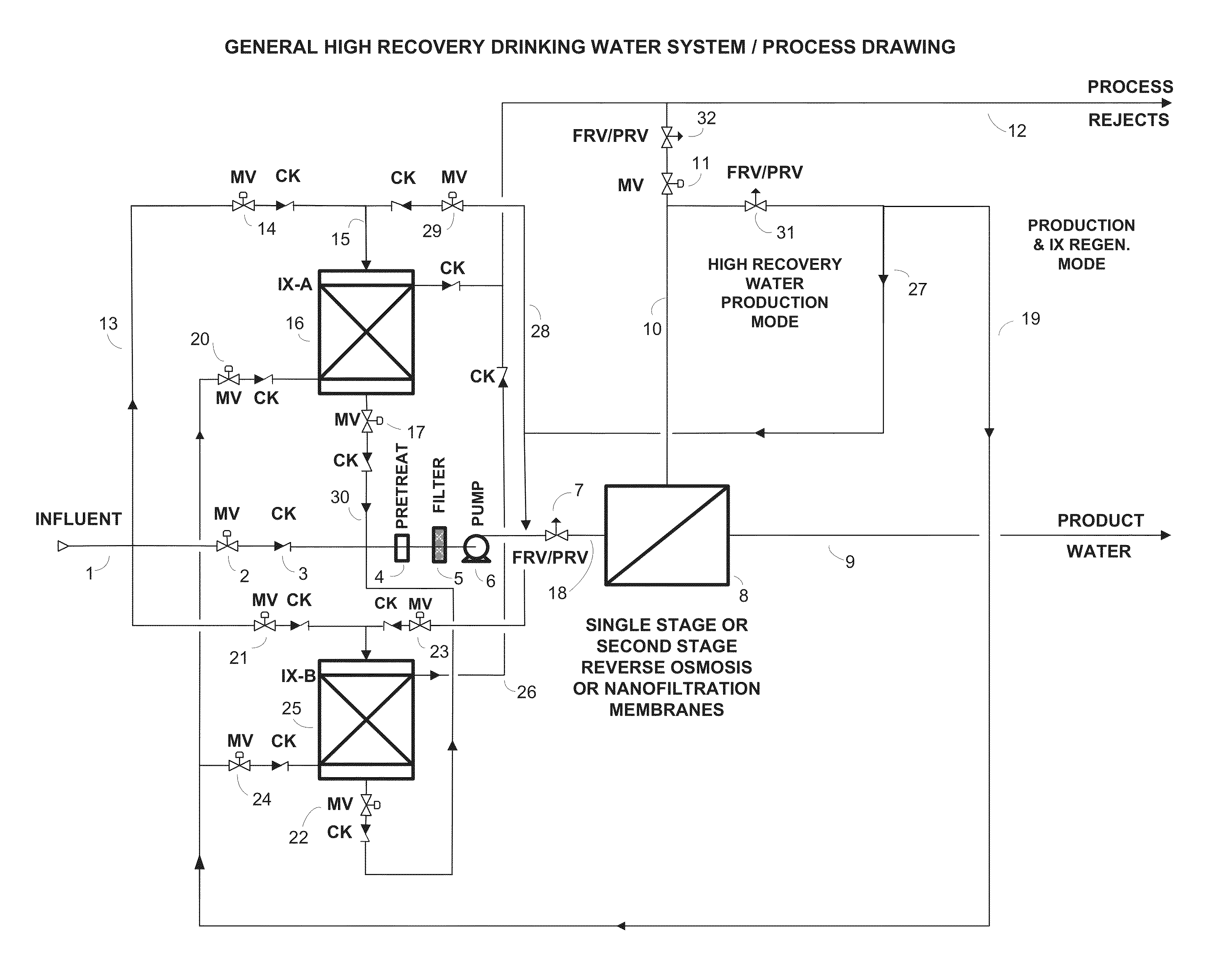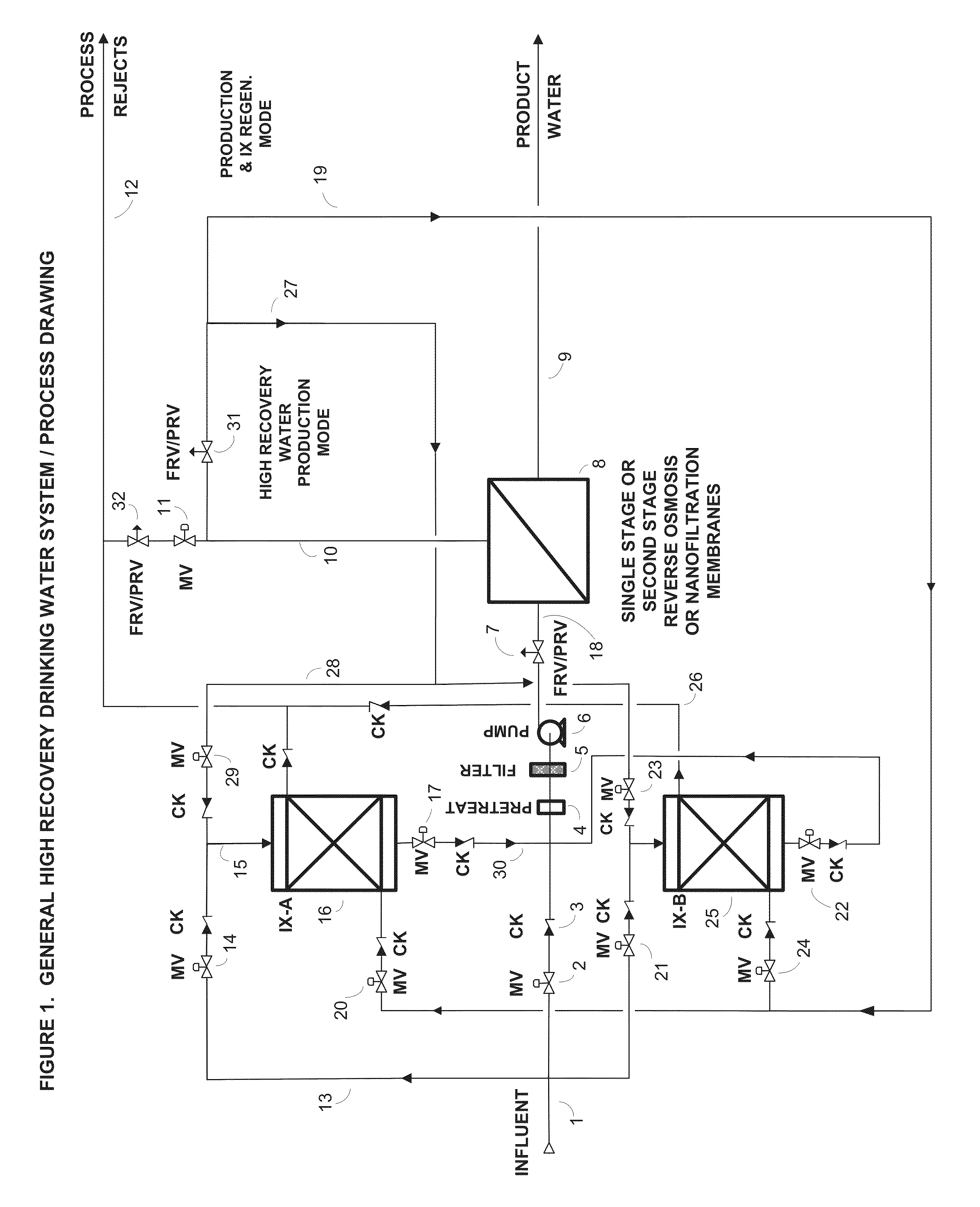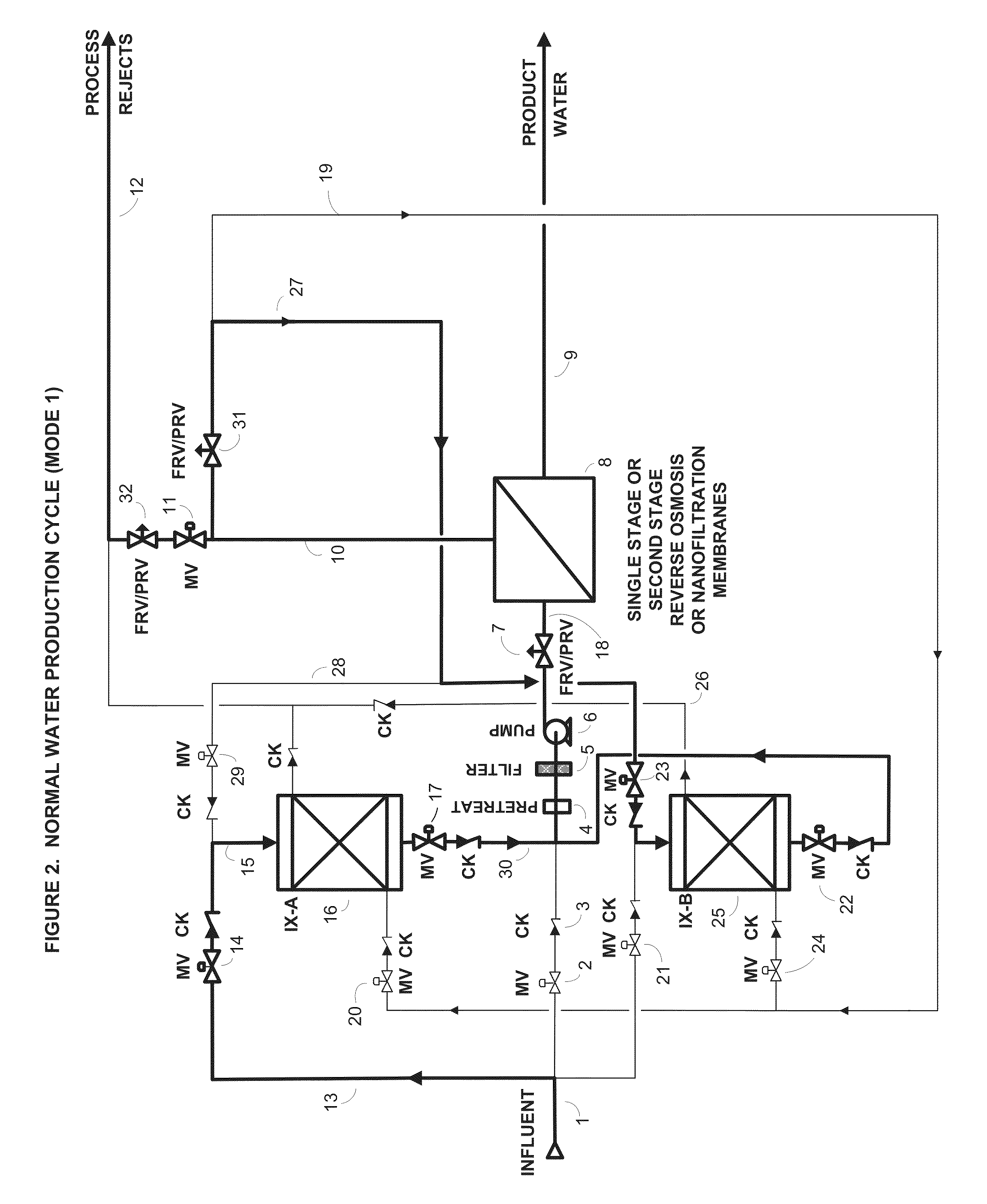High Recovery Drinking Water Process
a drinking water and high-recovery technology, applied in the direction of gravity filters, feed/outtake of settling tanks, specific water treatment objectives, etc., can solve the problems of reducing the useful service life of desalinated water, limiting the percentage recovery of purified water, and requiring very frequent membrane cleaning frequency, etc., to achieve high-product water recovery
- Summary
- Abstract
- Description
- Claims
- Application Information
AI Technical Summary
Benefits of technology
Problems solved by technology
Method used
Image
Examples
Embodiment Construction
[0019]The present invention provides a process, system and apparatus for water purification which is particularly suitable for purification of drinking water, meaning water that is intended for and / or is suitable for consumption by humans. The invention in various embodiments increases the RO or NF permeate recovery, thereby reducing the volume of membrane rejects to drain that are generated and reduces the intake water volume, thereby reducing the annual operating cost of the drinking water system. The invention can also be applied to the treatment, desalination or purification of industrial service water, and the reclamation of industrial and municipal effluents. Thus, the invention is broadly applicable for purification of water from a variety of sources.
[0020]The High Recovery Drinking Water Process represented by the current invention is generally illustrated in FIG. 1, which depicts a General High Recovery Drinking Water System / Process,while the flow paths associated with four...
PUM
| Property | Measurement | Unit |
|---|---|---|
| concentration | aaaaa | aaaaa |
| solids concentration | aaaaa | aaaaa |
| concentration | aaaaa | aaaaa |
Abstract
Description
Claims
Application Information
 Login to View More
Login to View More - R&D
- Intellectual Property
- Life Sciences
- Materials
- Tech Scout
- Unparalleled Data Quality
- Higher Quality Content
- 60% Fewer Hallucinations
Browse by: Latest US Patents, China's latest patents, Technical Efficacy Thesaurus, Application Domain, Technology Topic, Popular Technical Reports.
© 2025 PatSnap. All rights reserved.Legal|Privacy policy|Modern Slavery Act Transparency Statement|Sitemap|About US| Contact US: help@patsnap.com



